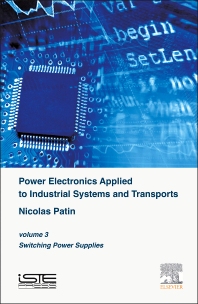Books in Engineering and technology
Books in Engineering and technology
The Engineering and Technology portfolio includes comprehensive overviews of all major research and practical developments in aerospace and automotive engineering, civil and environmental engineering, mechanical and industrial engineering, materials engineering, electrical engineering, communications engineering, and more. In-depth coverage, innovative state-of-the-art approaches, and real-world case studies provide valuable, actionable insights for researchers, applied engineers and students. The content in Elsevier's Engineering and Technology books program addresses core issues in industry and society, such as sustainability, the circular economy, AI, and automation.
- 1st Edition
- April 29, 2015
- Arindam Basu
- English
- Hardback9 7 8 1 7 8 2 4 2 3 1 1 9
- eBook9 7 8 1 7 8 2 4 2 3 2 4 9

Advances in Silk Science and Technology
- 1st Edition
- April 27, 2015
- Ping Wang
- English
- Hardback9 7 8 0 3 2 3 3 9 6 1 7 2
- eBook9 7 8 0 1 2 8 0 3 8 8 4 0

Design of High-Speed Railway Turnouts
- 1st Edition
- April 24, 2015
- Nicolas Patin
- English
- Hardback9 7 8 1 7 8 5 4 8 0 0 2 7
- eBook9 7 8 0 0 8 1 0 0 4 6 2 3

Power Electronics Applied to Industrial Systems and Transports, Volume 3
- 1st Edition
- April 24, 2015
- Nicolas Patin
- English
- Hardback9 7 8 1 7 8 5 4 8 0 0 1 0
- eBook9 7 8 0 0 8 1 0 0 4 6 1 6

Power Electronics Applied to Industrial Systems and Transports, Volume 2
- 1st Edition
- April 21, 2015
- Frank B. Watts
- English
- Paperback9 7 8 0 1 2 8 0 2 3 8 2 2
- eBook9 7 8 0 1 2 8 0 2 6 0 1 4

Configuration Management for Senior Managers
- 2nd Edition
- April 20, 2015
- Masato Abe
- English
- Paperback9 7 8 0 0 8 1 0 0 3 9 0 9
- eBook9 7 8 0 0 8 1 0 0 3 7 3 2

Vehicle Handling Dynamics
- 1st Edition
- April 16, 2015
- Lingling Fan + 1 more
- English
- Paperback9 7 8 0 1 2 8 0 2 9 6 9 5
- eBook9 7 8 0 1 2 8 0 2 9 8 6 2

Modeling and Analysis of Doubly Fed Induction Generator Wind Energy Systems
- 1st Edition
- April 14, 2015
- em. Dr.-Ing Bernd Stoffel
- English
- Paperback9 7 8 0 0 8 1 0 0 5 9 7 2

Assessing the Energy Efficiency of Pumps and Pump Units
- 1st Edition
- April 10, 2015
- em. Dr.-Ing Bernd Stoffel
- English
- eBook9 7 8 0 0 8 1 0 0 6 6 5 8

Assessing the Energy Efficiency of Pumps and Pump Units
- 1st Edition
- April 9, 2015
- Sarah Harris + 1 more
- English
- Paperback9 7 8 0 1 2 8 0 0 0 5 6 4
- eBook9 7 8 0 1 2 8 0 0 9 1 1 6

Digital Design and Computer Architecture, ARM Edition